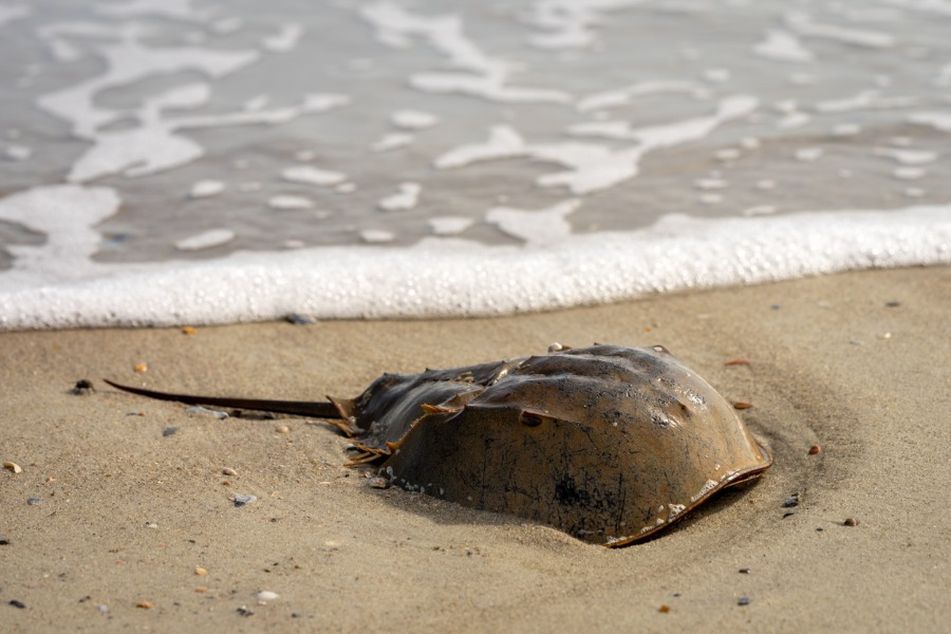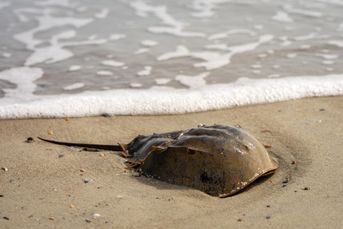Can shareholders save the horseshoe crab?

Efforts to stop the decline in horseshoe crabs show how investors can work with corporations on sustainability issues.
Every spring across the beaches of the Delaware Bay, thousands of rufa red knots — robin-sized shorebirds — arrive from the tip of South America for the horseshoe crab spawning season to refuel for the remainder of their 9,000-mile migration to the Arctic. This May, with considerably less fanfare, the Pharmaceutical Supply Chain Initiative, a membership organization representing 75 of the world’s largest pharmaceutical companies, published a position paper that may help to ensure that future generations continue to witness this fragile miracle of nature, while placing public health on a more secure foundation.
This is a story that speaks to the interdependence of natural and human systems, corporate inertia and the role of investors in driving corporate accountability. For me, it began in 2021, with an article about the decline of the rufa red knot, now considered “threatened” under the Endangered Species Act, driven by a drop in the abundance of horseshoe crab eggs, an energy-rich food the birds depend upon.
One significant driver of the horseshoe crab’s decline is the biomedical industry, which collects and “bleeds” hundreds of thousands of horseshoe crabs per year to produce a reagent used to test for deadly endotoxins in all injectable and implantable medical products, such as vaccines and pacemakers.
This is not a typical tale of corporate rapaciousness. Harvesting horseshoe crabs has saved millions of human lives. If you’re reading this, and you’ve ever received an inoculation, you can thank the horseshoe crab.
Investors typically consider the negative consequences of corporate activity to be financially immaterial, representing the cost of doing business that is paid by others. Today, those costs are adding up and destabilizing the systems our markets depend upon to function.
It was the financially immaterial red knot that caught the attention of Jay Bolden, a scientist at Eli Lilly who also happens to be a birder. In 2018, the company announced a commitment to transition 90% of its endotoxin testing to a synthetic alternative by 2020, backed by peer-reviewed analysis demonstrating that the alternative was as good, if not better, than the horseshoe crab reagent.
A viable alternative had been on the market for 15 years. When I learned that it had been off-patent since 2018, and that Eli Lilly had saved money by making the switch, I was truly puzzled. Why weren’t more companies following their example?
Climate change and globalization will shift disease vectors and bring new pandemics. Surely, the need for endotoxin testing will only increase. Horseshoe crabs are not inexhaustible. How will their supply meet growing demand? Is this a prudent foundation for human health, particularly in the midst of a mass extinction event?
In late 2021, we wrote to 14 pharmaceutical companies based in the United States, Europe and Asia. We presented the business case, including cost savings, greater consistency and reliability, and improved supply chain management, including the most important factor — the replacement of a finite resource with a potentially limitless one.
The response was disappointing, with several companies failing to respond to repeated requests.
We decided to take a different approach. Companies often need a safe space to work through new issues. So early in 2022, we brought this issue to the leadership of the PSCI, who formed a working group to develop an industry wide solution. On World Biodiversity Day, PSCI published a position paper, The use of Horseshoe Crabs in the Pharmaceutical Sector, outlining “good practice,” including an immediate end to the harvesting of the endangered Asian horseshoe crab and minimization of all horseshoe crab blood use, including the consideration of synthetic alternatives.
The issue is now squarely — and publicly — on the industry agenda. Thanks to the PSCI, we are now urging pharmaceutical and medical device companies in our portfolios to adopt a set of good practices developed by their own peers. However, the clock is ticking, as horseshoe crab and bird populations decline at unpredictable and alarming rates.
Our markets are not as efficient and self-correcting as we’d like to think. To meet the global goal of reversing nature loss by 2030, we believe investors must take a more proactive role, which is why we have been working to launch Nature Action 100 as part of our firmwide biodiversity road map.
Sometimes the reason an industry has not seized an opportunity or mitigated a risk is simply because its investors haven’t asked for it.
Adam Kanzer is head of stewardship for the Americas at BNP Paribas Asset Management.
Expect big-cap tech momentum to slow through year-end, says Fiduciary Trust International manager
Learn more about reprints and licensing for this article.




